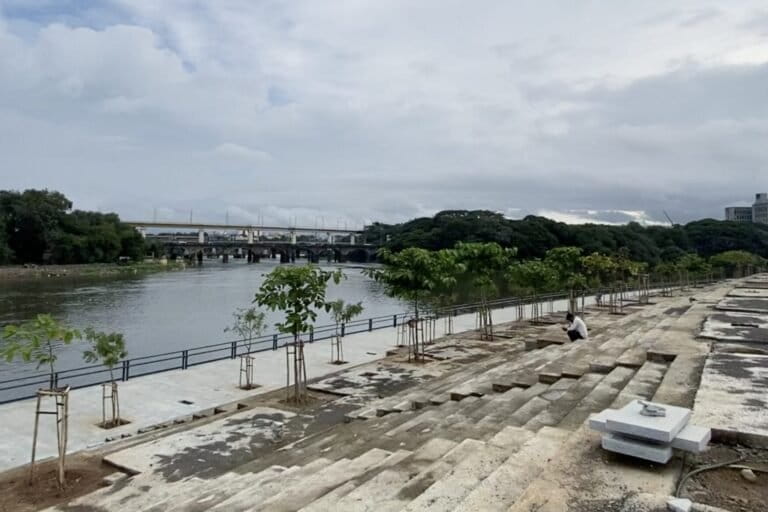- A recent study on the Western Ghats highlights growing concerns over road construction in biodiversity-rich protected areas. This adds to findings of earlier research studying the deleterious impact of roads and construction on conservation effectiveness.
- The study hopes to convince policy-makers to implement the laws governing forest protection more effectively.
- Research from India also seems to confirm similar concerns worldwide over protected area management vis-a-vis development activities.
When rich forests in biodiversity hotspots are carved out as protected areas it is presumed that the notification will help conserve them. But high human density, road building and other construction activities end up undoing the overall protection efforts.
Recent research on India’s Western Ghats, a global biodiversity hotspot and a UNESCO World Heritage Site, highlight growing concerns over road construction in biodiversity-rich areas. The National Green Tribunal, for example, is hearing a plea to stop road construction through the Corbett Park.
The new study, published in Biological Conservation compared multiple factors that are known to affect forest loss globally and evaluated which of these factors best predicted forest loss in the Western Ghats from 2000-2016. It also examined the relative importance of and interactions among the factors driving forest loss, to understand which factors were most important in the Western Ghats.
The scientists found that while the ‘protected areas’ – wildlife sanctuaries and national parks – had lower forest loss than other forests, “forest loss increased in areas that were closer to roads and had higher local human population density.”
The Western Ghats are home to endangered wild mammals such as the tiger, Asian elephant, Asiatic wild dog, and ‘gaur’ (Bos gaurus). The region also contains unique habitats such as the montane shola-grassland ecosystems and wet evergreen forests with many endemic plants, amphibians and reptiles.

On the flip side, the region has high human population densities averaging at 350 people per square kilometre, intensive agriculture and a relatively small extent of area under strict protection compared to global targets, according to the study authors.
The study found that Western Ghats lost about 750 square km – 0.8% – of forest between 2000 and 2016, slightly higher than previous estimates. Given that the mean size of protected areas in this hotspot is 280 square km, “these results imply that the Western Ghats lost the equivalent of over 2.5 protected areas in the last 15 years,” the study notes. “These losses are a matter of concern in a region that has already lost much of its natural habitat.”
“Biodiversity hotspots such as the Western Ghats are facing increasing pressure from population growth and economic development,” Meghna Krishnadas, one of the study authors, told Mongabay-India. “Yet, we lack information on site-specific factors related to forest loss in individual hotspots.”
“The main insight from our study is that legal protection can help protect forest cover, but proximity to roads and high human population densities can reduce the efficacy of protection,” said Krishnadas.
The scientists also found that the relative importance of the factors associated with forest can change with spatial scale and different factors can drive forest loss in areas in the same hotspot. “So, designing conservation policy for hotspots might have to be scale-dependent and a one-size-fits-all policy might not always work,” she said.
Krishnadas added that while her team’s study was restricted to the Western Ghats, “the same methods can be used to assess the relative importance of different factors, for example, roads and human population densities, to investigate the main drivers of forest loss across a landscape of interest such as the western Himalayas or northeast India.”

The rocky road to biodiversity conservation in the Western Ghats
Roads and other development activities impact forests in multiple ways, from fragmentation and degradation, to serving as conduits for invasive species and wildlife mortality, said T. R. Shankar Raman, scientist at the Nature Conservation Foundation (NCF), Mysore. “Earlier studies in the Bandipur Tiger Reserve have shown the gravity of habitat loss due to road construction through the forest,” he said. “Each kilometre of road affected at least 10 hectares of the habitat to its detriment.”
Roads particularly impact closed canopy evergreen and semi-evergreen forests that are abundant in the Western Ghats, Andaman and Nicobar islands and the Himalayas, he said. Roads disrupt the characteristic high-biodiversity concentrations in closed canopy forests, leading to fragmentation of the areas rich in unique biodiversity.
Similarly, roads alter light availability and affect heating and drying of nearby surfaces, in turn helping the establishment and spread of alien weeds. “Roads also provide a corridor for the new weeds to disperse their seeds which eventually reach protected forests too,” he says.
Several studies have shown the spread of woody weeds such as lantana and even non-woody ones such as parthenium along roads near forested areas.
Additionally, as roads and power lines cut through swathes of forests, the overhanging and overlapping branches in a forest canopy break and are disrupted. Animals that use the branches for moving across forests end up either getting electrocuted by the powerlines or killed by vehicles on the roads, added Shankar Raman.

A 2012 NCF study published in Current Science, on the impact of vehicular traffic on the usage of highway edges by large mammals passing through the Nagarahole Tiger Reserve in southern India, concluded: “Although roads and other infrastructure are important for economic development, poor planning, disregard for the ecological aspects and excessive road expansion into wildlife habitats will further fragment and destroy wildlife populations and their habitats in the long term.”
“Balancing development with conservation is perhaps among the greatest challenges we face today as a modern society,” said Krishnadas. She hopes that the study will convince policy-makers to maintain the integrity of laws governing forest protection; adopt best practices advocated by researchers to regulate placement of roads and other infrastructures in forested areas; develop site-specific interventions geared towards reducing forest use/loss in populous areas, especially to reduce stresses on protected areas; and explore options with local stakeholders to retain forest cover outside protected areas.
“Based on our findings, we think that more site-specific assessments are required to understand the different factors driving forest loss. In addition, remote-sensing studies have to be coupled with on-field ecological studies. Most importantly, we see a need for conservation policies that can help retain forest cover and support biodiversity outside protected areas. We have to expand our science and policy framework to understand how human-modified landscapes can complement parks and PAs in long-term conservation. No doubt this will be a challenge, but one that we have to take up urgently,” she said.
Protected areas vs development activities: a global concern
The new research on India confirms similar concerns worldwide over protected area management vis-a-vis development activities. For example, an upcoming paper in Science of The Total Environment, based on a study on roads and protected natural parks in Spain, concludes that: “roads and traffic would trigger consequences on the structure and functioning of scavenger food webs, which may be particularly concerning in protected areas with remarkable levels of biodiversity. Future regulations at protected areas should couple both traffic and tourist affluence with wildlife conservation.”
In May 2018, scientists reported in Science that a third of the world’s protected areas are under human pressure.

Another May 2017 study in Science, looking at noise pollution impacts on protected areas in the United States, found that noise by human activity “doubled background sound levels in 63 percent of U.S. protected area units and caused a 10-fold or greater increase in 21 percent, surpassing levels known to interfere with human visitor experience and disrupt wildlife behaviour, fitness and community composition.” The scientists found higher noise also in critical habitats of endangered species; with 14 percent of the habitats “experiencing a 10-fold increase in sound levels.” Their analysis also indicated that “noise pollution in protected areas is closely linked with transportation, development and extractive land use, providing insight into where mitigation efforts can be most effective.”
The new study on India notes that “unlike in the Amazon or south-east Asia where large swathes of forests are clear felled for ranching, plantations, or timber, forest loss in the Western Ghats is occurring at smaller, more localised spatial scales.”
The drivers of patchy, small-scale deforestation are many. “Small dams and illegal mines are emergent and pervasive issues in the Western Ghats,” said Krishnadas. “But their impacts on forest loss, degradation, biodiversity and ecosystem function remain largely unexamined.” Additionally, ongoing forest clearances to expand roads and highways would contribute to patchy losses.
“Our study highlights an urgent need for field-based studies that delve into the drivers of small-scale, patch forest losses across the Western Ghats,” she added.
CITATION:
Krishnadas M., Agarwala M., Sridhara S., and Eastwood E. (2018). Parks protect forest cover in a tropical biodiversity hotspot, but high human population densities can limit success. Biological Conservation, Vol. 223, 147-155.














